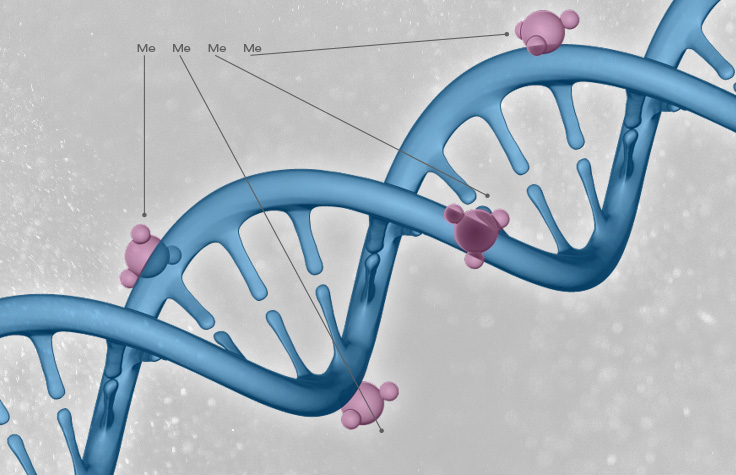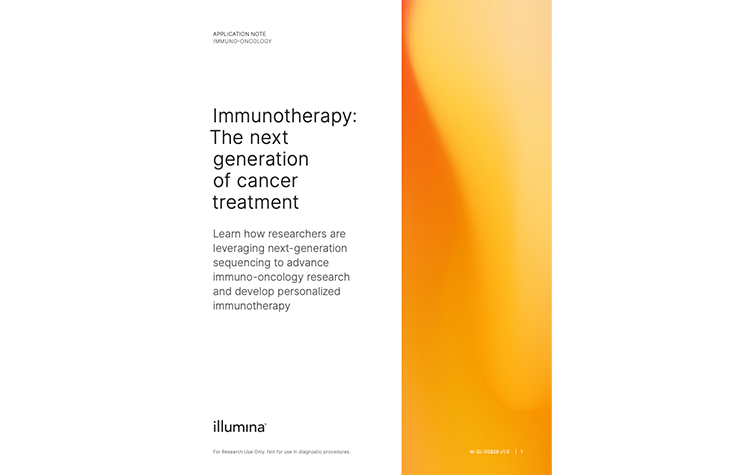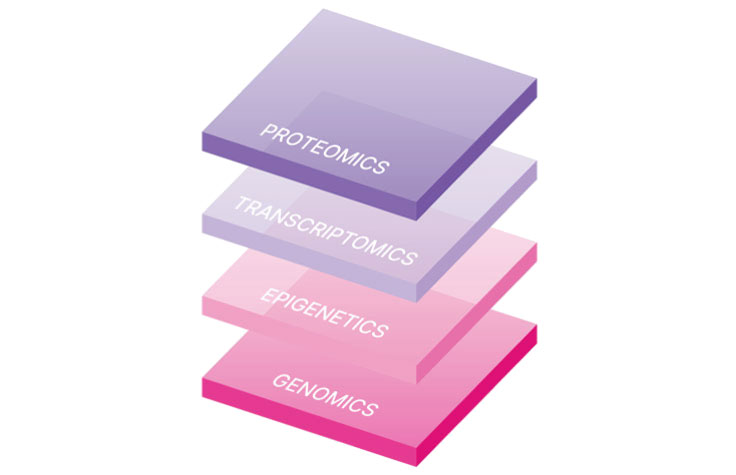Immuno-Oncology Research

Genomic tools for characterizing tumors
Immuno-oncology is an emerging field that has taken great strides in the fight against cancer, supported by a better understanding of how tumors evade the natural immune response. Leading immuno-oncology researchers are leveraging next-generation sequencing (NGS) to study immunotherapy response factors, biomarkers, and genomics to improve personalized immunotherapy research.
Immuno-oncology research into the mechanisms tumors use to evade the immune response has led to promising therapeutic targets. These therapies boost the immune system's ability to target cancer or limit the tumor’s ability to evade the immune response. In addition, NGS can help identify which pathways are activated in the tumor environment and how they are involved in processes such as cancer cell proliferation, survival, invasion, and metastasis.

Immunotherapy: The next generation of cancer treatment
This application note highlights recent advances in immuno-oncology, including evolving trends, needs of researchers, and genomic technologies available to aid in this rapidly advancing field.
NGS-based immuno-oncology research solutions
Tumor microenvironment and immune composition
NGS is a powerful tool that can provide a detailed analysis of the cancer genome. It can also efficiently assess tumor microenvironments in real-time with high sensitivity to monitor immune marker expression in response to tumor growth or treatment. NGS can characterize the immune cell repertoire, identify various cell populations in the microenvironment, and comprehensively quantify gene expression in thousands of targets simultaneously.
Tumor mutational burden and neoantigen prediction
NGS can also help researchers identify neoantigens, study innovative therapies to boost the immune response, and understand how genetic variation can influence their efficacy. NGS has also enabled the predictive selection of novel tumor antigens that can be applied to elicit a tumor-specific response.
Learn more about tumor mutational burden
Spatial transcriptomics for tumor microenvironment analysis
Spatial transcriptomics provides a topographical arrangement of gene expression patterns mapped onto tissue sections to link structure and activity. This capability allows researchers to articulate biological interactions at the cellular level to gain novel insights into complex tissues, such as tumor microenvironments.
Learn more about spatial transcriptomics
Gut microbial composition in cancer
NGS can be used to study the influence of host-microbiome interactions on cancer development, progression, and treatment efficacy. NGS can profile microbial communities in different contexts, which is critical for identifying species or conditions that may be targeted for developing new therapeutic approaches to cancer.
Single-cell analysis in tumor microenvironments
Single-cell RNA sequencing (scRNA-Seq) is being increasingly used to investigate the transcriptomic profile of cancers and tumor microenvironments at single-cell resolution. Immune cell studies, in combination with single-cell transcriptomics, has been applied to understand the key factors in cancer immunosurveillance and resistance to immunotherapy.
NGS-based cancer research applications
| Neoantigen, mutational burden |
Expression profiling |
Microbiome (16S) sequencing |
TCR/BCRa profiling |
Epigenetic profiling |
|
|---|---|---|---|---|---|
| Therapeutic applications | |||||
| Checkpoint inhibitors | |||||
| Vaccines | |||||
| Adoptive cell therapy | |||||
| Prognostics | |||||
| Microbiome | |||||
| Immune repertoire | |||||
| Monitoring |
- Key application
a TCR, T-cell receptor; BCR, B-cell receptor

Multiomics in oncology research—Multiple layers of information provide novel insights into tumor biology that cannot be resolved by single omics studies alone.
Multiomic approaches in immuno-oncology research
Multiomic studies integrate high-dimensional data sets from genomic, epigenomic, transcriptomic, metagenomic, and proteomic approaches, often using computational and network biology to interpret the vast amounts of data generated by these techniques. Applying multiomics to clinical research data amplifies the discovery power of existing omics methodologies to uncover new biomarkers and immunotherapy targets.
In addition, multiomic approaches can provide a comprehensive view of the molecular profile of the tumor and microenvironment.
NGS workflows for immunotherapy research
Illumina offers several library preparation and sequencing options with access to data analysis options for immuno-oncology research. Streamlined workflows and flexible kit configurations can accommodate multiple study designs.
Library prep
AmpliSeq for Illumina Immune Repertoire Plus, TCR beta Panel
Targeted RNA research panel to investigate T cell diversity and clonal expansion by sequencing T cell receptor beta chain rearrangements.
Illumina Stranded Total RNA Prep w/ RiboZero Plus
Provides exceptional performance for the analysis of coding and multiple forms of noncoding RNA. Gain high-confidence discovery of alternative transcripts, gene fusions, and allele-specific expression.
Illumina DNA Prep
A fast, integrated workflow for a wide range of applications, from human whole-genome sequencing to amplicons, plasmids, and microbial species.
Sequencing
NovaSeq X Series
The NovaSeq X Series offers vast application breadth, enabling data-intensive methods at production scale.
NovaSeq 6000 System
Scalable throughput and flexibility for virtually any genome, sequencing method, and scale of project.
NextSeq 1000 and 2000 Systems
These cost-efficient, user-friendly, mid-throughput benchtop sequencers offer extreme flexibility to support new and emerging applications.
Data analysis
BaseSpace Sequence Hub
The Illumina genomics computing environment for NGS data analysis and management.
BaseSpace Sequence Hub RNA Amplicon App
The RNA Amplicon app enables gene expression profiling using amplicon panels sequenced on Illumina platforms.
Local Run Manager RNA Amplicon Module
An integrated solution designed to create sequencing runs, monitor run status, analyze sequencing data, and view results.

Cancer Research Methods Guide
The Cancer Research Methods Guide is a 40+ page comprehensive resource with simple, comprehensive workflows for a broad range of cancer research applications. This guide includes single-cell sequencing, spatial sequencing, methylation profiling, multiomics, cell-free RNA sequencing, and more.
Download free guideImmuno-oncology resources

Transforming oncology with genomics
Researchers from the Ontario Institute for Cancer Research and United Health Network share how knowing more about cancer biology through genomic studies enables universities and health systems to advance the fight against cancer.

Enabling IR-Seq for cancer research
This downloadable poster outlines a new scalable tool for cancer research to enable full-length V(D)J immune-repertoire sequencing (IR-Seq).

TruSight Oncology products
Explore our solutions to enable comprehensive genomic profiling from tissue to liquid biopsy samples.
Related resources
Cancer research overview
Our sequencing and microarray technologies support a broad range of cancer genomics research applications, from DNA to RNA analysis, epigenetics, and more.
Cancer research applications
Explore the different applications within cancer research, including liquid biopsy research, single-cell analysis, and epigenetics.
Genomics products for cancer research
Kits and reagents to help researchers identify genomic changes in cancer.
References
- Caushi JX, Zhang J, Ji Z, et al. Transcriptional programs of neoantigen-specific TIL in anti-PD-1-treated lung cancers. Nature. 2021;596(7870):126-132. doi:10.1038/s41586-021-03752-4